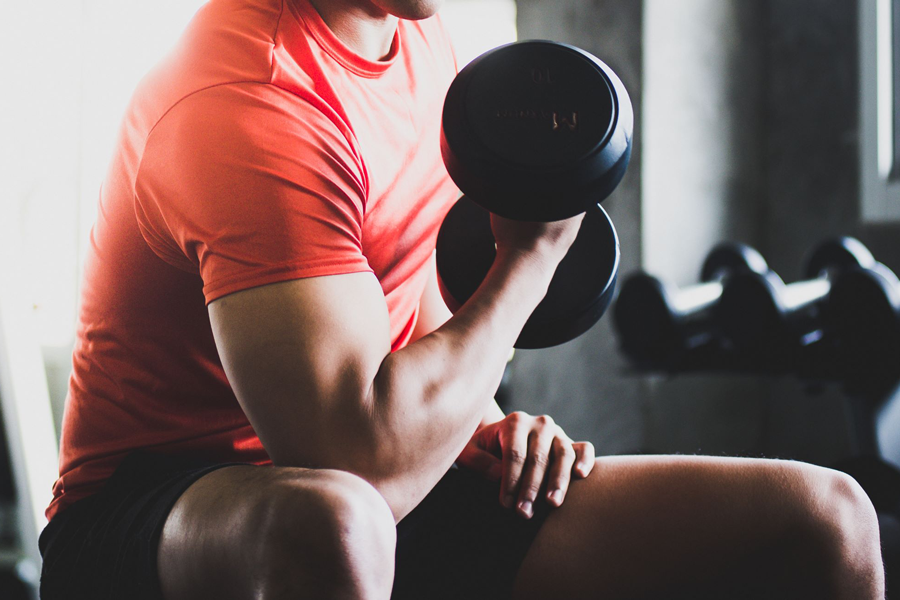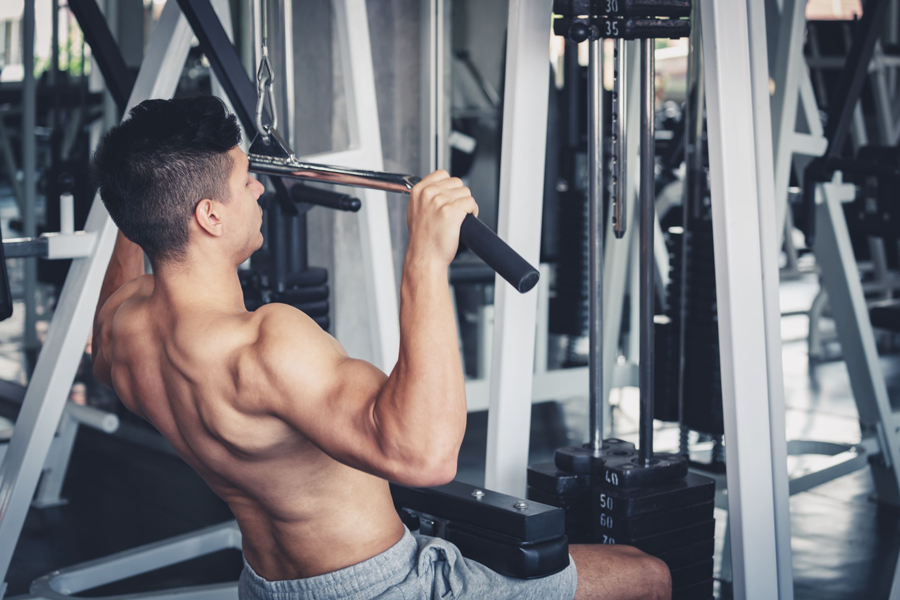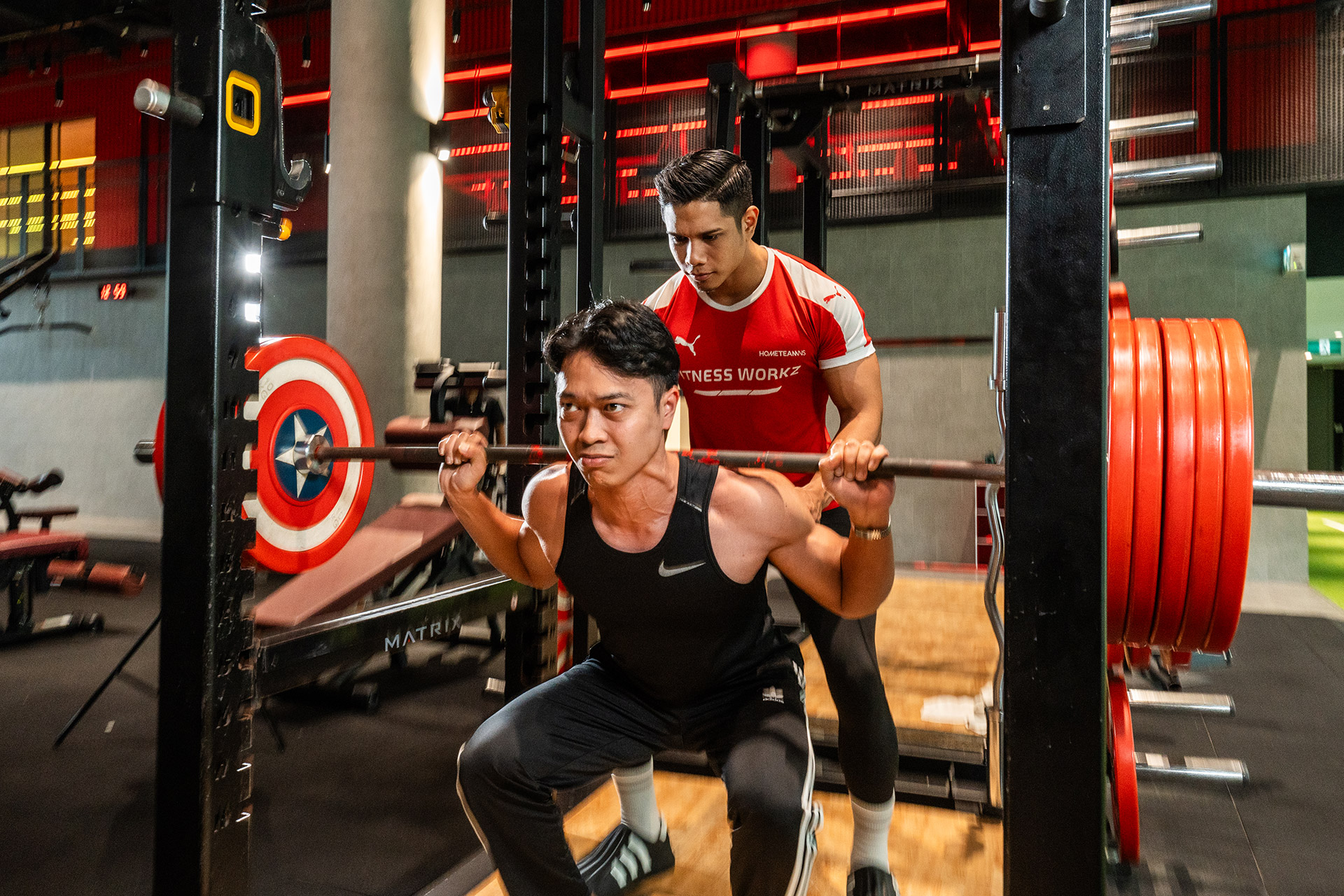TEXT: GILBERT WONG
PHOTOS: SHUTTERSTOCK

TEXT: GILBERT WONG
PHOTOS: SHUTTERSTOCK
Picture your ideal physique. Is it the perfectly sculpted musculature of a bodybuilder or the size and thickness of a powerlifter? Regardless of which type sounds appealing to you, building the body of your dreams requires hard work, and it often means training with weights consistently and with purpose to achieve your size, strength, and conditioning goals.
But with a myriad of different types of resistance training styles available for people to build mass, muscular strength, and density, is lifting free weights the best option or should you consider other methods?
Here’s a look at some of the pros and cons of using free weights for strength training and getting in shape.
Whether it’s the bench press or the biceps curl, lifting free weights provides you with true unrestricted range of motion compared to using a weight machine. This not only helps to fully work your muscle, but also help to keep your exercise functional.
“Free weights allow your body to move throughout all three planes of motion, so that you move throughout space like you would in normal life,” said strength coach and personal trainer Mike Donavanik, C.S.C.S. “Even a basic free-weight exercise, such as a standing dumbbell biceps curl, carries over into daily activities like lifting grocery bags or shopping bags.”
Using free weights can help you get stronger in more ways than one. On compound movements such as the deadlift, you’re not just working on your lower body and back — you’re recruiting a large number of different muscle groups in order to lift the weight in a smooth and stable manner.
“Because your body has to work to support the weight and control the movement, your larger muscles, stabiliser muscles, and core all work together to control your movements,” said Mr Donavanik. Plus, people who train with free weights can improve their balance nearly twice as much as those who used machines according to a 2008 study in the Journal of Strength and Conditioning Research.
Regardless of your experience level, having access to free weights provides with you a nearly limitless number of exercises and training styles. By incorporating a varying number of sets and repetitions, you can tailor your training to your specific goals and work on just about every muscle group.
Sports like bodybuilding, powerlifting, and CrossFit make use of free weights like barbells, dumbbells, and kettlebells, but the training methodology is vastly different. This versatility is what makes free weights one of the best tools you can use to get in shape.

While it is highly beneficial to be familiar with using free weights, it’s not the best piece of training equipment if you wish to target a specific muscle group. For instance, the barbell back squat is one of the kings of lower body exercises, but it does not provide the isolation that a machine may offer for adding definition to the quadriceps.
“Machines are designed to create mechanical overload in a specific muscle, which means they can help improve definition in that muscle,” said American Council on Exercise (ACE) certified personal trainer Pete McCall.
Added Mr Donavanik: “Even though a free-weight exercise may be quad-, glute-, or hamstring-dominant, other muscles are still always working. That’s not a bad thing, but if you’re looking to isolate, you need to hit the machines.”
Free weights are often the go-to tools for overall strength development. However, beginners will need guidance and assistance to prevent injuries from occurring. Without learning the right form and technique, there may be a higher risk of injury especially for some who may overestimate their abilities.
“Even if an individual is strong, the ego is sometimes stronger, causing him to lift a weight that is heavier than his existing level of strength,” said Mr McCall. “While overloading a barbell for a squat or bench press could cause serious injury, machines allow a user to lift with maximal loads with a minimal risk of injury from falling weights.”
Free weights may not be the best option for you if you are short on time. Training with dumbbells and barbells are great, but the setup and unloading process can be a hassle especially if you’re going up to exceptionally heavy loads.
Free weights have clear benefits and are probably the best training tool to progress and develop one’s physical fitness and overall strength, especially if you don’t have access to a gym.
However, you may consider using other training implements or more specialised equipment if you want to reduce the risk of injury or target certain muscle groups. The best thing you can do is incorporate a mix of different training tools to get the most out of your next workout session.

Weight machines are becoming more commonly used, so it’s important to know when to use weight machines and when good ol’ free weights work best for you.
Free weights
Types of free weights include barbells, dumbbells, kettlebells, and more. They can be used to train different muscle groups in diverse disciplines, from bodybuilding to CrossFit. There are many ways one can use free weights for improving strength, power, and endurance.
Weight machines
Common machines include the cable crossover for your chest or the leg press for your lower body. Weight machines are built for training specific muscle groups. While they provide less flexibility, they are often considered safer and easier to use, especially for beginners.



